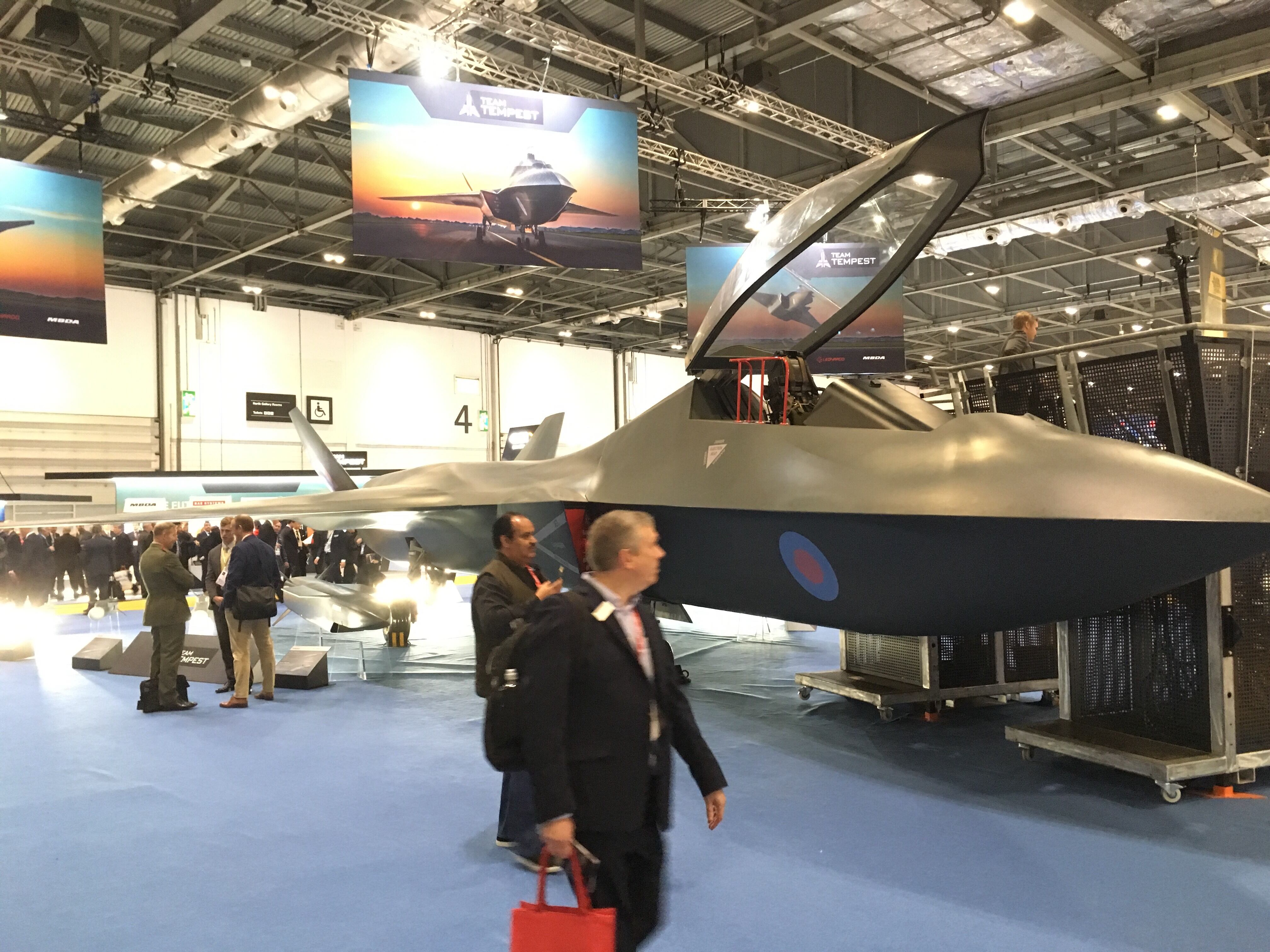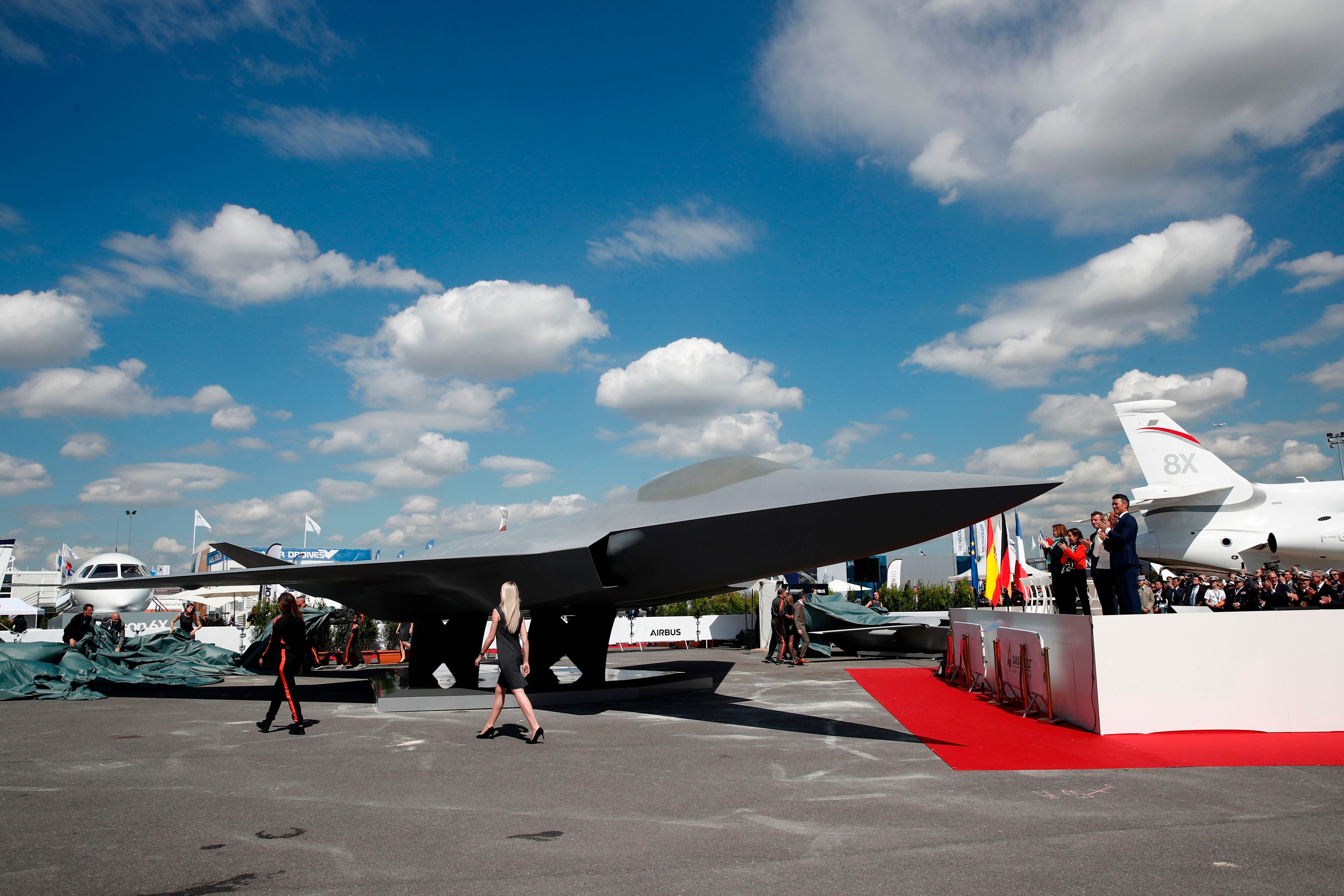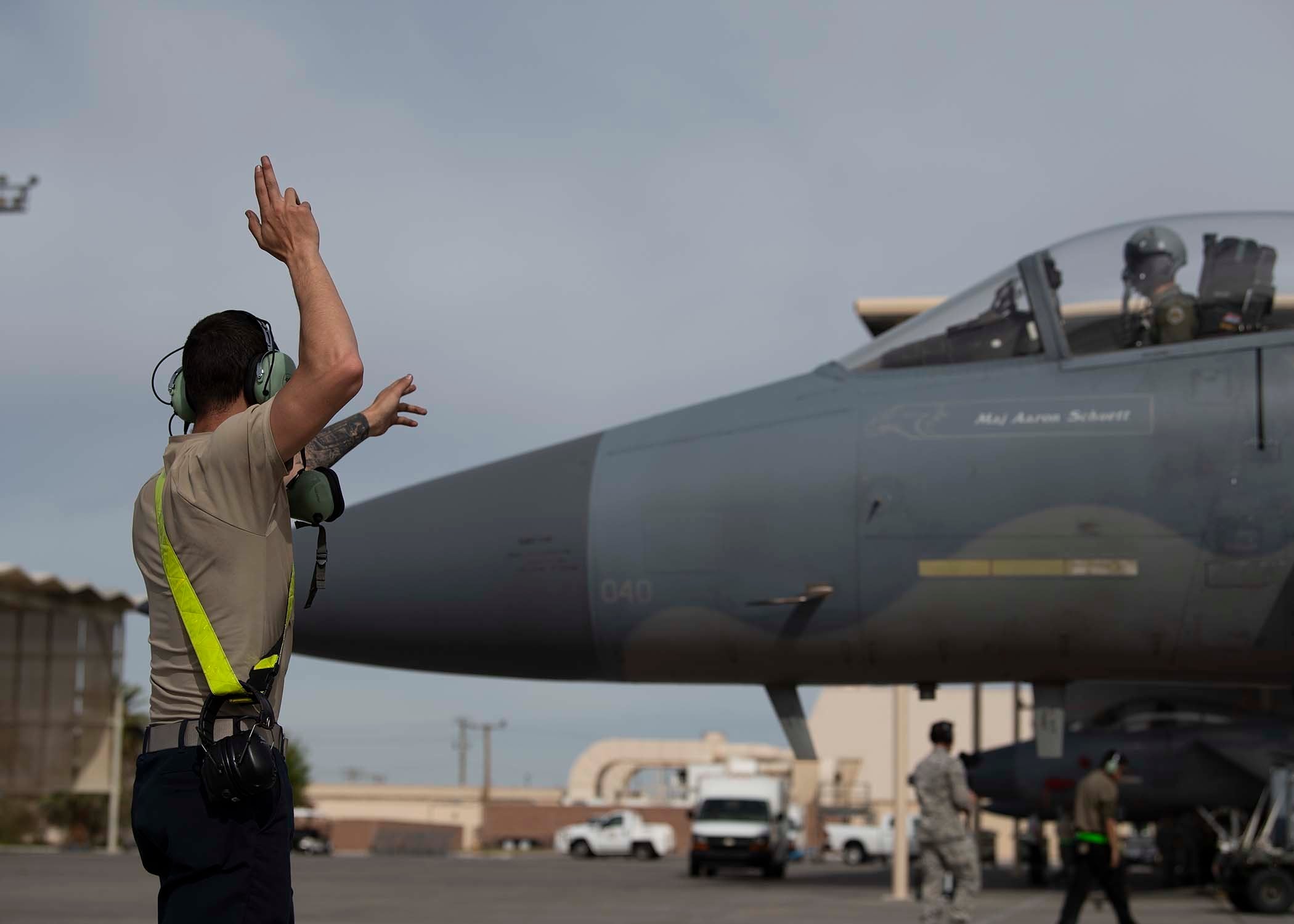LONDON — What few headlines were generated by the recent virtual Farnborough International Air Show centered on Britain’s next-generation Tempest fighter and the efforts to build a business case for the program.
The real Farnborough air show may have fallen victim to COVID-19, but with the Tempest team scheduled to deliver an outline business case for the next stage of the program to the government later this year the event provided a platform stress the importance of the project to jobs, the technology base and sustainment of operational sovereignty here.
Britain launched the effort to look at developing the technologies required to build a sixth-generation combat jet two years ago under the name of Team Tempest, with BAE Systems, Leonardo UK, MBDA UK and Rolls-Royce partnering with the Ministry of Defence in the effort.
Since then Sweden and Italy have also been recruited to study potential involvement in future combat air systems development and the Tempest program itself.
Neither nation has committed itself yet, though, and a drive also continues to find other potential partners.
Opening the virtual show, British Defense Secretary Ben Wallace flagged the country’s interest in securing the signatures of other nations in development of a future combat aircraft.
“The U.K. is keen to see more international partners join us. … There is room for a broad range of other partnerships,” Wallace said.
Leonardo CEO Alessandro Profumo said in a show webcast a number of countries had shown an interest in the program.
“Time remains for other partners to join Tempest. You have seen other nations express an interest and we are extremely positive for the future,” Profumo said.
RELATED

Japan, India and Saudi Arabia are among countries that have previously been mentioned as potential partners.
It is also too soon to rule out the possibility of a realignment of some description with the rival Franco-German-Spanish future combat air program, said Doug Barrie, the senior air analyst at the International Institute of Strategic Studies think tank in London.
“I think there’s still a considerable period to go where alignments could change – with the possibility members could join or leave,” he said.
Howard Wheeldon, of consultants Wheeldon Strategic Advisory, sees no chance of the two programs merging but reckons national line-ups could change.
“I would rule out any thought of a merger between the two European projects, although I would never rule out the possibility of Germany jumping ship,” he said.
With or without additional partners, always assuming Swedish and Italian Governments sign up for some sort of deal, Wheeldon reckons the British will stick with Tempest.
“While the ideal situation would be an increase in the number of Team Tempest partner nations, such is the importance now being placed on future combat air systems and Team Tempest by the government I take the view that even if no other partners arrive the U.K. will not walk away from Tempest,” he said.
For the moment, though, attention is focused on Team Tempest and the progress being made with its current would-be partners to study a potential tie-up around development of future combat air systems for the British and Italian operated Typhoon and Saab Gripen E combat jets and, ultimately, the building of the sixth-generation Tempest to be ready sometime between 2035 and 2040.
The British have over 60 combat air technology demonstrations underway co-funded by the government and industry.
Talks between the industrial partners of Britain, Italy and Sweden,which had previously been on a bilateral basis, have now been ratcheted up to trilateral discussions, strengthening potential research and development collaborations.
“We’ve made good progress with Saab and Leonardo in identifying shared goals and expertise and through this new framework, we can build on this collaboration to unlock the huge potential across our three nations,” said BAE CEO Charles Woodburn.
The three national industries comprise BAE, Leonardo UK, Rolls Royce and MBDA UK from Britain; Leonardo, Elettronica, Avio Aero and MBDA Italia from Italy; and Sweden’s Saab and GKN Aerospace Sweden.
Additionally, Saab also used the virtual show to announce it was investing £50 million in the creation of a future combat air system hub and other activities in the U.K.
RELATED

The location and timing of the investment have not yet been declared by Saab but there is talk here that the center could be close to BAE’s combat jet operations in northwest England.
Saab CEO Micael Johansson said the move signaled the company’s commitment to combat air development and the growth of its interests in the U.K.
Tempest itself didn’t rate a mention in the Saab statement, with the company only referring to future combat air system development work.
“Saab took the decision to create a new future combat air system centre so that we can further develop the close working relationship with the other future combat air system industrial partners and the U.K. MoD. This emphasizes the importance of both future combat air systems and the U.K. to Saab’s future,” said Johansson.
The Tempest industrial effort has also been further broadened with the signing up of a clutch of systems suppliers.
Bombardier in Northern Ireland, GKN, Martin Baker and Qinetiq, alongside the U.K. arms of Collins Aerospace, GE Aviation and Thales have signed up to collaborate on the demonstration program.
So far only Collins Aerospace Systems has declared its hand on the nature of the work they will be undertaking. The company said it had been awarded a contract by BAE to provide advanced actuation capabilities, including for use on Tempest.
Separately, GKN Aerospace in Sweden revealed July 22 it is participating in a future fighter engine feasibility study along with Rolls-Royce and Avio Aero of Italy.
Richard Aboulafia, vice president at the Teal Group, said progress signing up the systems suppliers was a significant move.
“My big take away from virtual Farnborough is that Tempest increasingly looks like a real program, with a very heavy level of involvement from subcontractors, who of course need to start developing systems,” said Aboulafia.
Despite the fact COVID-19 has pretty much sucked the life out of the U.K.’s finances for now, the feeling among analysts is that Tempest will survive a potentially perfect storm of severe defense budget restrictions and an integrated defense, security and foreign policy review ordered by Prime Minister Boris Johnson and due to report next year.
In an opinion piece for the Sunday Telegraph July 26 Defense Secretary Wallace said the Government would be “pivoting away” from traditional equipment capabilities with the armed forces reshaped to operate “much more in the newest domains of space, cyber and sub-sea.”
But he also made the point that a sharper technological edge and a relentless focus on innovation was required to outmaneuver adversaries. The policy would unlock opportunities in jobs, skills and in exports, he said.
Wheeldon said that sort of language was right out of the Tempest playbook.
“The government has made it abundantly clear that it views development of new technologies as being the absolute priority for the U.K. Tempest is not only a test case of that commitment but is also its flagship. Bottom line is my belief that the government is even more behind the program than it was two years ago.,” said Wheeldon.
“My sense is that despite the expectation of capability, manning and base cuts emerging from the integrated review process the government will continue to back major development projects such as Team Tempest,” he said.
RELATED

IISS’s Barrie reckons that without the need yet for massive spending on the program Tempest and future combat air developments could ride out the COVID-19 storm, and maybe even benefit.
“So far the program looks secure-ish, even with the pending outcome of the Integrated Review, given that the near-term levels of investment are manageable. There is also the argument that with the commercial aerospace sector being battered by the pandemic, any support the government could provide to the wider sector would be welcome – the future combat air system provides such a vehicle,” he said.
Aboulafia reckons that while there may be a risk of delay it’s unlikely the economic impact of COVID-19 on Tempest will be significant.
“These programs are certainly at risk of being delayed, but the bulk of the heavy spending bill is due well after the pandemic recovery period, so it’s unlikely that this crisis will force any tough decisions. And the whole point of Tempest of course is to avoid getting involved with a program led by France,” he said.
Paul Everitt, the CEO of the ADS industry lobby organization, said the future combat air effort fitted the government's plans to boost the manufacturing economy to a tee.
“The Tempest program is the government’s prosperity agenda in action,” said Everitt.
One of the key issues yet to be announced by the British is whether they see Tempest as piloted or optionally piloted.
Wallace seemed to signal his preference for an optionally piloted machine when he told virtual-Farnborough viewers that while ninety percent of combat jets are crewed today, he expects a “major reversal of these proportions by 2040.”
In a report on Britain’s combat air choices released late July, Royal United Services Institute analyst Justin Bronk said the decision was of huge importance for Tempest.
“The decision of whether or not to develop a piloted or optionally piloted solution as part of Tempest will have critical implications for the nature, cost implications and minimum viable scale of the program,” he said.
“While it remains an operating assumption for many, the outcome of the Team Tempest next-generation combat air development program is not necessarily going to involve a new (optionally) piloted fast jet fleet to directly replace Typhoon. If that ambition is the choice made, it will have major budget implications for an already stretched combat air equipment program between 2024 and 2040,” said the analyst.
Bronk says in the report that a decision to go for a piloted Tempest only could have ramifications elsewhere in Britain’s combat jet force.
“Barring a massive increase in overall defense spending, significant F-35 purchases beyond 2024 remain financially incompatible with a full-scale piloted vehicle-centric Tempest program to replace Typhoon, even if some additional combat air funding can be found,” Bronk warned.
The British have pledged to buy 48 F-34Bs by 2024 out of a total commitment for 138 aircraft.
Andrew Chuter is the United Kingdom correspondent for Defense News.








